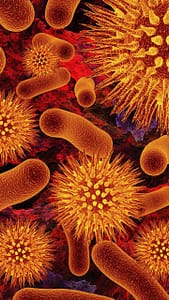 I know everyone is patiently awaiting the video replay from the symposium last week, and we hope to get it on the website this week! Also coming soon: a MAP forum partnership where you can share your stories, treatments, theories and ideas about everything MAP. Sign up and stay connected to the latest developments and others like you. While we wait for the video, here are a few thoughts from a humble audience member.
I know everyone is patiently awaiting the video replay from the symposium last week, and we hope to get it on the website this week! Also coming soon: a MAP forum partnership where you can share your stories, treatments, theories and ideas about everything MAP. Sign up and stay connected to the latest developments and others like you. While we wait for the video, here are a few thoughts from a humble audience member.
The August 16, 2015 Crohn’s Symposium in Deerfield, IL was a truly historic event. It was attended by a core group of doctors, patients and interested members of the public who generally had some relation to Crohn’s disease in their own life. The audience sat in silent reverence for three hours listening to the information of the presenters who have devoted their lives to this cause.
Dr. William Chamberlin began with an overview of Crohn’s disease and discussed general concepts necessary to understand what was to come. After a early intermission due to technical difficulties, Dr. Michael Collins presented a history of MAP in cattle and made a compelling case that MAP is a zoonosis (a disease that comes from the animal population but ends up infecting humans.) He then demonstrated how food from infected animals is commonly contaminated with MAP and food manufacturing practices such as pasteurization kill many but not all MAP. It was scary how MAP can survive pasteurization and how he’s cultured it from a good number of commercial infant formulas. There was an even an interesting story about how he once bought a cow!
There were two presenters in the diagnostics category. Dr. Amy Hermon-Taylor, daughter of Prof. John Hermon-Taylor of MAP Vaccine fame, outlined the companion diagnostic their lab is developing. It’s clear that future research in this area is in need of an accurate diagnostic, especially considering that MAP may be involved in more inflammatory diseases than just Crohn’s disease. From what I understood, the MAP test works by attaching a marker antibody onto MAP, then shining a laser through a revealer antibody and the MAP cells will appear green. It appeared quite promising and the lab is conducting human trials now. Later, she spoke about the progress of the virally vectored vaccine which showed very promising results in cattle, and would hopefully be ready for human trials soon. She explained how it would not only prevent MAP infection but also treat established infections.
John Aitken, a laboratory scientist from New Zealand, also described the diagnostic test that his lab has been using. Instead of using DNA, their lab is “simply” growing an organism cultured from the blood of Crohn’s patients they have termed Son of MAP, something others have tried and failed to do for decades. There was one slide which showed a four day Son of MAP culture which had all but eaten away the media and covered the entire plate. Mr. Aitken described how he had been working with the Mycobacterial species for over ten years, and has been collaborating with other worldwide experts. He detailed five forms he’s observed in this organism, of which the persistor form is commonly seen in long term Crohn’s disease patients. The presentation contained lots of photos of Son of MAP never before seen. His group is also developing a high volume screening technique to allow MAP eradication on farms.
Lastly, Dr. William Chamberlin introduced EpiBro: a new therapy that his company is readying for testing in Crohn’s disease patients. He described how Crohn’s disease patients have a genetic innate immune system defect which doesn’t allow them to effectively kill the Mycobacterial species. EpiBro has shown great promise with few side effects in HIV/AIDS, Tuberculosis and Malaria patients because it:
- Stimulates innate immunity, which Crohn’s disease patients are unable to accomplish on their own.
- Down-regulates damaging inflammation resulting in less tissue damage.
- Resolves the infection by enhancing immunity.
A newly formed company, Immunikas, is hoping to begin human trials with EpiBro soon.
A last minute addition to the program, Dr. David Rubin from the University of Chicago, spoke about genetic associations with Crohn’s disease and stated that he used Anti-MAP therapy as one option in his practice. He was interesting and engaging and gave an overview of the research being done by his group, which included investigations into the microbiome.
After the final word, many attendees stayed for an informal Meet and Greet with the presenters. It was a happy, enjoyable time to talk to other Crohn’s disease patients who were on Anti-MAP therapy and discuss what was learned with the presenters themselves. There were quite a few parents who brought their children with Crohn’s disease, and it was especially poignant to see some of the young people sharing their stories with each other and giggling like ordinary kids. I watched as the RedHill group was greeted warmly, the presenters talked science with parents and each other, and everyone sang a rousing Happy Birthday to Dr. Hermon-Taylor. Instead of being a somber gathering of sick Crohn’s disease patients, I saw energized people celebrating their life and health. Some day, when Anti-MAP therapy, the MAP Vaccine and EpiBro become the new standard of care, I hope that the children who came can proudly say: “I was there!”
